Exploring the Diverse Satellites of Our Solar System
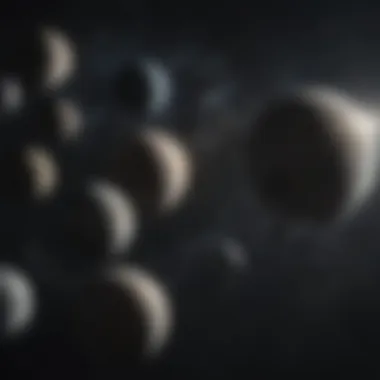
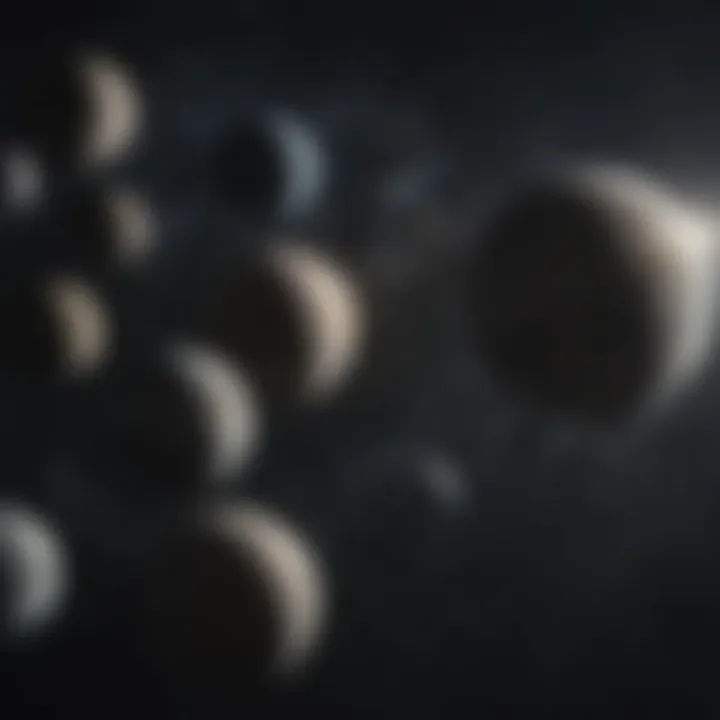
Intro
The solar system is a complex and intricate web of celestial bodies. Among these are satellites, which play a crucial role in the dynamics of planetary systems. With a variety of characteristics and origins, these satellites are not only integral to their host planets but also significant for our understanding of space and astronomical sciences. Many people think of the term "satellite" primarily in the context of technological inventions orbiting the Earth, yet natural satellites, or moons, are equally important in the narrative of our solar system.
Satellites come in varying sizes and compositions, from the large, rocky moons of Jupiter to the small, icy bodies orbiting the distant planets. Their study offers insights into the conditions that prevailed during the formation of the solar system. This article aims to unpack the nuances surrounding these celestial entities, helping readers appreciate how these satellites contribute to our knowledge of planetary formation and evolution.
Research Overview
Summary of Key Findings
The exploration of satellites has revealed several interesting findings. For instance, many natural moons show signs of geological activity, which can suggest the presence of subsurface oceans. Research indicates that moons like Europa and Enceladus may harbor conditions suitable for life. Furthermore, artificial satellites provide vital data about their host planets, contributing to the broader field of space exploration and observation of cosmic phenomena.
Importance of the Research in Its Respective Field
Understanding the diverse range of satellites provides significant benefits not only for planetary science but also for astrobiology and astrophysics. The study of these celestial objects helps clarify the workings of gravity, formation processes, and the potential for extraterrestrial life. Insights gained from natural moons can inform the design and deployment of technology in space, guiding future missions to explore other planetary bodies.
"Satellites offer a unique window into the past and present of planetary systems, fueling our understanding of the universe."
Methodology
Description of the Experimental or Analytical Methods Used
Research on satellites typically employs a combination of observational and analytical methods. Data is gathered using telescopic observations, spacecraft missions, and computer simulations. For example, data from missions like NASA's Galileo and Cassini provided crucial information on the moons of Jupiter and Saturn, respectively. These missions use spectrometry, imaging, and radar techniques to analyze the physical characteristics of the satellites.
Sampling Criteria and Data Collection Techniques
The sampling criteria for studying satellites often focus on their geological features, atmospheric composition, and magnetic fields. Scientists collect data through methods such as:
- Orbital photography
- Surface composition analysis via spectrometers
- Gravitational field measurements
By combining data from multiple sources, researchers can formulate a comprehensive understanding of each satellite's properties and their roles within the solar system.
In summary, the exploration of both natural and artificial satellites holds essential clues to understanding our solar system's history and ongoing evolution. This groundwork lays the necessary foundation for deeper explorations into the cosmos.
Intro to Solar System Satellites
The exploration of satellites within our solar system reveals much about the cosmos and our place within it. Satellites, both natural and artificial, play a fundamental role in our understanding of planetary systems. Their significance extends beyond mere observation; they are crucial for research in planetary formation, astrobiology, and even the technological advancements that propel space exploration forward.
By delving into the satellites that exist in space, we uncover insights into the behaviors and interactions of celestial bodies. This article aims to articulate the various types of satellites, their formation theories, and their broader scientific implications. It emphasizes the need to grasp their importance, particularly as scientific interests push boundaries in space exploration. Through this examination, readers gain a coherent narrative of satellites' complexities and contributions, further empowering researchers, educators, and students engaged in astronomical studies.
Definition and Importance of Satellites
Satellites refer to celestial bodies that orbit a planet or another body in space. They can be either natural, like moons, or artificial, like the International Space Station. Natural satellites are significant for providing clues about the formation and evolution of the planets they accompany. They help scientists study the processes that shape planetary bodies and their atmospheres.
Artificial satellites, developed by humans, serve varied functions. They enhance communications, enable scientific data collection, and provide essential tools for weather forecasting. Thus, satellites of all types are pivotal in expanding our knowledge and capabilities in space.
Overview of Solar System Structure
The solar system comprises diverse celestial bodies, each with unique characteristics. At the center lies the Sun, a massive star that provides the energy necessary for life on Earth. Surrounding the Sun are eight planets, including Earth, each accompanied by various satellites. Beyond these planets is a belt of asteroids, which may host many smaller natural satellites.
In addition, the solar system includes dwarf planets like Pluto, which also have satellites. This hierarchical structure showcases interactions among different bodies, providing deeper insights into gravitational influences and orbital mechanics. Such a comprehensive understanding of solar system structure sets the stage for further studies on how satellites influence their planetary systems.
"Understanding the structure of the solar system helps us understand our own planet and its place in the universe."
By viewing the solar system through the lens of its satellites, researchers can better appreciate the complexities and interdependencies in space, enriching our broader understanding of the universe.
Types of Satellites
The classification of satellites is crucial to understanding their role in our solar system. By distinguishing between natural and artificial satellites, we can appreciate their unique functions, characteristics, and contributions to scientific knowledge. This section provides a detailed exploration of these types, emphasizing their significance and impact on various aspects of space research and technology.
Natural Satellites
Moons
Moons are the most common type of natural satellites in the solar system. Their primary role is to orbit planets, providing valuable insights into a planet's gravitational influence and surface conditions. The key characteristic of moons is their diverse geological features, which can range from craters to icy surfaces, revealing clues about the history of their parent planets.
For instance, the Moon of Earth provides a direct connection to the history of human exploration in space. Its proximity allows for easy study and has been a focal point for various lunar missions. This makes it a significant choice for research in planetary sciences.
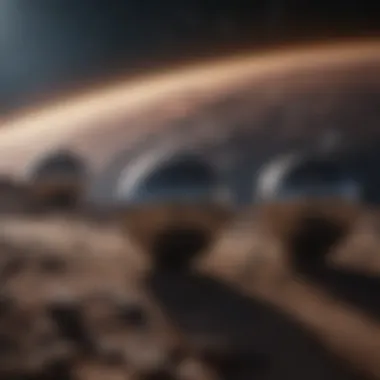
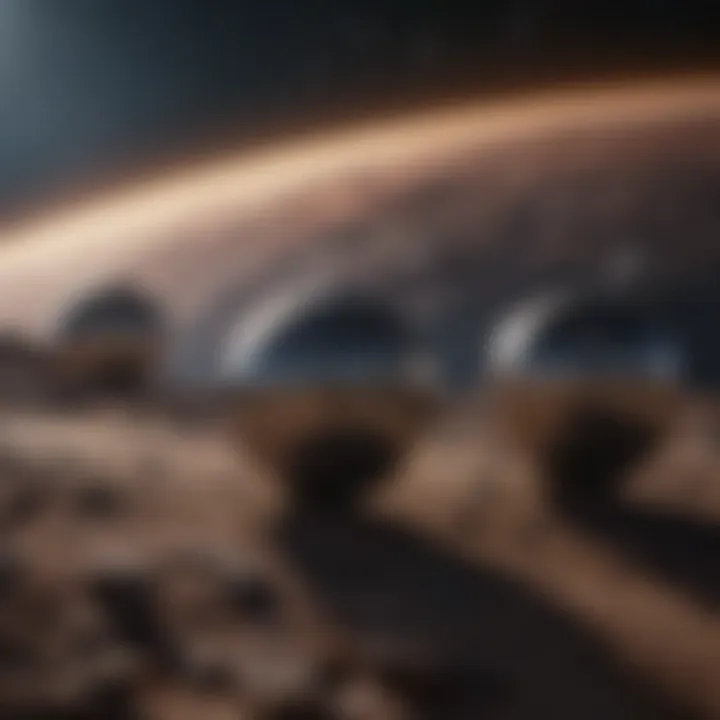
A unique feature of moons is their ability to influence a planet's tides and ecosystem. For many planets, such effects are critical for maintaining balance in their orbit and climate. However, not all moons are conducive to human exploration, and some—like those in the outer solar system—pose challenges due to their harsh conditions.
Asteroids as Satellites
Asteroids can also function as satellites when they become captured by a planet’s gravitational field. This occurrence is not very common compared to moons, but it does happen. The importance of asteroids lies in their original, primitive material, which can provide clues to the early solar system's formation.
A critical attribute of asteroids as satellites is their composition, which often includes metals and minerals, potentially useful for space mining. This feature makes them an intriguing subject for industrial and scientific exploration. However, the disadvantages include their unpredictable trajectories, which can complicate their study and missions aimed at them.
Artificial Satellites
Communications Satellites
Communications satellites are engineered space devices that facilitate global communication, weather forecasting, and broadcasting. Their primary function is to relay signals between stations on Earth. A defining characteristic is their orbit altitude, with many operating in geostationary orbits that keep them positioned over the same geographic area.
This is beneficial for ensuring consistent communication links and uninterrupted broadcasting. However, the heavy reliance on these satellites raises concerns about space debris and the potential for signal disruption. Their unique feature lies in the technology that allows them to maintain signals across vast distances, but vulnerability to space weather poses a notable disadvantage.
Scientific Research Satellites
Scientific research satellites are designed to gather data about various aspects of our planet and the broader universe. These satellites contribute to our understanding of climate change, natural disasters, and space phenomena. Their main advantage is their capability to observe Earth and celestial events without the interference of the atmosphere.
A key characteristic of scientific research satellites is their sophisticated instruments that enable high-resolution imaging and data collection. This makes them a popular choice for space research, as findings from these satellites can lead to significant breakthroughs in various fields. However, the expenses involved in launching and maintaining these satellites can limit the scope of their missions, and technological challenges can hinder data accuracy.
"Understanding the different types of satellites allows us to harness their potential for both exploration and communication, illuminating the paths for future research and technology development."
In summary, this section elaborates on the diversity and significance of satellites, highlighting their roles in advancing scientific understanding and supporting human activities on Earth.
Overview of Major Natural Satellites
In examining the satellites of our solar system, we find an intricate landscape populated primarily by natural moons. These celestial bodies reveal essential insights into planetary formation, evolution, and the conditions that might support life elsewhere. The moons vary widely, showcasing a remarkable diversity in their characteristics, environments, and geologies.
The role of major natural satellites goes beyond mere companionship to their host planets. They often serve as focal points for research into multiple scientific domains, including astrobiology, geology, and comparative planetology. Through the study of these moons, scientists can infer processes that occurred billions of years ago and gain context for the ongoing debate regarding the potential for extraterrestrial life.
The Moons of Jupiter
Jupiter's moons are a case study in planetary sciences. Four of them—Ganymede, Europa, Io, and Callisto—each present unique features that contribute markedly to our understanding of this gas giant and its environment.
Ganymede
Ganymede is the largest moon in the solar system, exceeding even Mercury in size. One of its most significant contributions is its potential for hosting an underground ocean. This characteristic makes it a priority for studies regarding habitability and its potential for astrobiological investigations. However, a major disadvantage in Ganymede's exploration is its distance from Earth, making missions costly and complex.
Europa
Europa captures attention primarily because of its icy surface, which is thought to cover an ocean of liquid water beneath. This aspect raises tantalizing possibilities regarding alien life. Europa's smooth surface also suggests geological activity, indicating dynamic processes at work. However, its thin atmosphere poses challenges for direct observation and further research.
Io
Io is the most volcanically active body in the solar system. Its constant eruptions reshape its surface and provide insights into tidal heating processes. This characteristic helps in comparison with other celestial bodies undergoing similar heating due to gravitational interactions. The main disadvantage for scientists is that its intense volcanic activity may hinder detailed long-term observations.
Callisto
Callisto is known for its heavily cratered surface, which showcases a record of the solar system's history. It is often viewed as a less geologically active moon compared to others, but it raises questions about the nature of impact processes in planetary science. Its thick atmosphere could also be a topic for research, albeit its extreme distance from our planet can complicate efforts to explore its environment.
The Moons of Saturn
Saturn has numerous fascinating moons that enrich our understanding of planetary systems. Notable among them are Titan, Enceladus, and Mimas. Each of these moons offers distinct insights into different planetary processes and astrobiological possibilities.
Titan
Titan is the second-largest moon in the solar system and often likened to a primordial Earth due to its dense atmosphere and presence of liquid methane lakes. Its atmospheric conditions and surface chemistry make it a prime candidate for studying prebiotic environments. The main disadvantage is its vast distance and the challenges of landing and conducting missions on its frigid surface.
Enceladus
Enceladus stands out for its geysers that spew water vapor into space. This observation has led researchers to consider its subsurface ocean as a possible habitat for microbial life. The unique feature of its plumes also presents opportunities for sampling materials that could inform about its ocean's potential habitability. However, conducting missions close to the plumes may pose risks due to their volatile nature.
Mimas
Mimas is often recognized for its resemblance to the Death Star from "Star Wars" due to a large impact crater on its surface. However, its role in studying gravitational interactions and tidal forces is significant. Yet, its lack of complex features makes it less exciting for investigations focused on astrobiology and geophysical phenomena.
The Moons of Mars
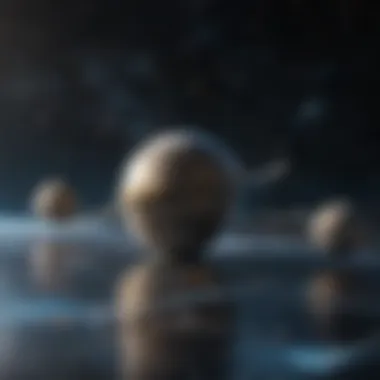
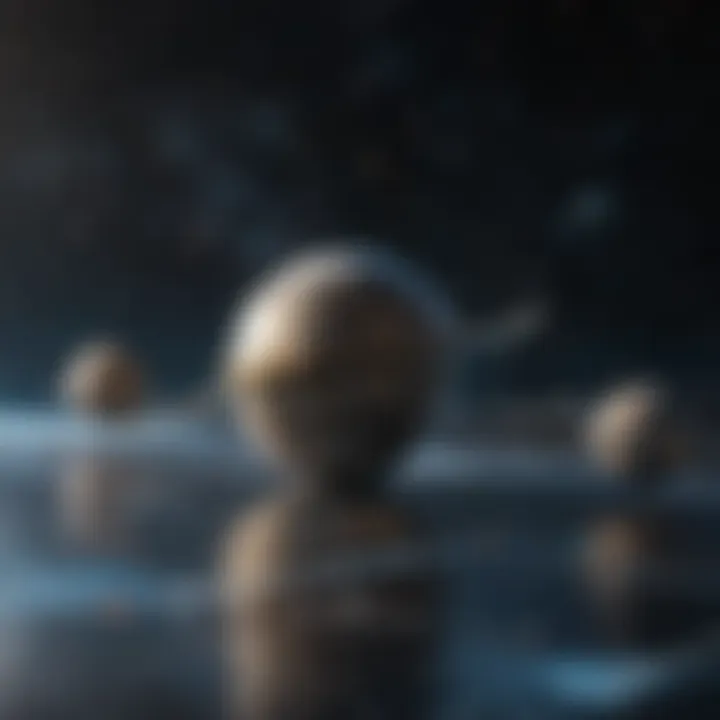
Mars has two small and irregularly shaped moons, Phobos and Deimos, that offer unique perspectives on the Martian system. Their characteristics and compositions can help shed light on the planet's history and evolution.
Phobos
Phobos is gradually spiraling closer to Mars and is expected to collide with the planet in about 50 million years. This inevitable fate grants scientists a chance to study its structure and behavior over time. Its surface has grooves that suggest a history of structural stress. However, its irregular and small size can make it challenging for surface exploration.
Deimos
Deimos is smaller than Phobos and orbits at a higher altitude. Its smooth surface is thought to be shaped by impacts and possibly significant erosion, giving insight into Mars’s environmental history. Its relative stability compared to Phobos provides unique study opportunities, but it lacks the dynamic features that often attract attention in research.
Formation Theories of Satellites
Understanding how satellites form is crucial for deciphering the intricate dynamics of our solar system. This section elaborates on three predominant theories: Capture Theory, Co-formation Theory, and Impact Theory. Each offers a framework for understanding the origins of various natural satellites that orbit planetary bodies. These theories not only help in explaining the composition and features of these moons but also contribute to our broader comprehension of planetary formation and evolution within the cosmos.
Capture Theory
Capture Theory posits that satellites can originate from outside their parent planet's gravitational influence. Essentially, a body can be captured into orbit through gravitational interactions. This generally happens when a smaller celestial body, such as an asteroid or a comet, passes close to a larger planet and loses enough speed to be pulled into orbit.
The mechanics of this theory can be quite complex. Factors such as the velocities and trajectories of both the incoming body and the planet play critical roles. For example, Triton, Neptune’s largest moon, is widely believed to be a captured object from the Kuiper Belt. Its tilted orbit supports the notion of an external origin. This theory explains not only the formation of some moons but also the diverse orbital characteristics observed in satellite systems.
Co-formation Theory
In contrast, Co-formation Theory suggests that satellites form simultaneously with their parent planets from the same protoplanetary disc. In this scenario, dust and gas in the surrounding environment of a forming planet coalesce. This process leads to the eventual creation of moons that share similar material properties with their respective planets.
This theory aligns with our understanding of how planets themselves are formed. It correctly predicts that moons should exhibit similar isotopic signatures to their parent planets, supporting the idea of a shared origin. For instance, the Galilean moons of Jupiter likely formed via this process, showing consistent composition with the planet’s own materials. This theory offers insights into the close relationship between planets and their moons, influencing the study of planetary systems.
Impact Theory
The Impact Theory presents yet another perspective, proposing that some satellites might form as a result of collisions. According to this theory, a significant impact on a planet could eject debris into orbit, which later coalesces into a moon.
A prominent example is Earth's Moon. It is hypothesized that a Mars-sized body collided with the early Earth, resulting in debris that eventually formed the Moon. This theory helps explain the differences in density and composition observed between the Earth and the Moon, indicating their distinct origins yet highlighting a common genesis from a violent cosmic event.
"The various formation theories provide a framework to link the origin of satellites with the dynamic processes in the solar system."
Each of these theories contributes uniquely to current understanding, guiding researchers in unraveling the complexities of satellite formation. As more data from explorations becomes available, these theories may evolve, offering deeper insights into the origins of these fascinating celestial objects.
Scientific Significance of Satellites
Satellites serve as integral components in the study of our solar system, facilitating insights that are crucial to several scientific fields. Understanding their significance can illuminate many aspects of planetary science, ranging from the basic composition of celestial bodies to complex evolutionary processes. Their importance lies not only in the data they provide but also in the broader implications for our understanding of the universe.
Understanding Planetary Formation
One of the most intriguing aspects of satellites is their role in shedding light on planetary formation. Satellites, both natural and artificial, provide essential information regarding the conditions that existed during the early phases of solar system development. Observations of the moons of gas giants like Jupiter and Saturn reveal diverse surfaces, geologic activity, and atmospheres that reflect their formation processes. For example, Ganymede and Europa show differentiated characteristics that suggest varied origins and histories. The study of these natural satellites allows scientists to test hypotheses about how planets and their moons coalesce over time.
Additionally, their orbits can yield insights about gravitational interactions and the distribution of mass in the solar system. Such studies also help identify whether planetary systems like our own are common throughout the galaxy or if they are anomalies. Understanding the initial conditions and the evolution of these satellites ultimately enhances our knowledge of how planetary systems operate as a whole.
Insights into Astrobiology
Satellites play a pivotal role in the field of astrobiology, particularly in the search for extraterrestrial life. Certain moons within our solar system, such as Europa and Enceladus, have shown compelling evidence of subsurface oceans. These environments may support conditions favorable for life. Evaluating the potential for life extends beyond mere speculation, as specific missions targeting these icy worlds aim to uncover their secrets.
The exploration of these natural satellites enables scientists to develop models predicting where life might exist beyond Earth. This directly impacts the understanding of life's prerequisites, including the availability of liquid water, organic compounds, and energy sources. Consequently, findings from satellites do not just enhance cosmic empathy—they manipulate fundamental questions about the existence of life in the universe.
"The study of natural satellites can unlock the mysteries of planetary systems and the potential for life beyond Earth."
In summary, the scientific significance of satellites encompasses much more than exploration. Their role in understanding planetary formation and astrobiology shapes current research and informs future explorations. As research continues, the implications of these findings will likely resonate throughout various scientific disciplines.
Artificial Satellites: Engineering and Technology
Artificial satellites play a pivotal role in modern technology and science. They are man-made objects deliberately placed into orbit around Earth and other celestial bodies. Their design and function have transformed not only our understanding of space but also everyday life on the planet. From communications to Earth observation, the benefits of artificial satellites are vast and varied.
Design and Structure
The design of an artificial satellite involves complex engineering principles. These satellites are crafted for specific missions, which dictate their shape and structure. For example, communication satellites often have large dish antennas to transmit signals. Satellites meant for scientific observation might have sophisticated sensor arrays or cameras.
Key elements of satellite design include:
- Power Supply: Most satellites use solar panels for energy. Batteries store this energy for use during periods without sunlight.
- Thermal Control: Satellites are exposed to harsh temperatures in space. Heat shields and radiators help maintain optimal operating conditions.
- Communication Systems: These systems allow satellites to send and receive data. Different frequencies can be used depending on the purpose of the satellite.
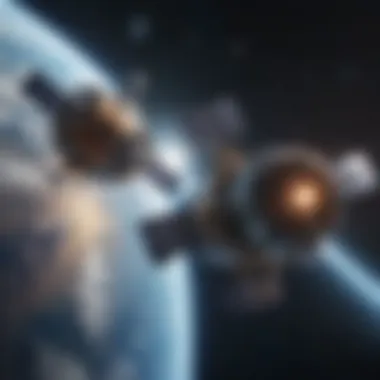
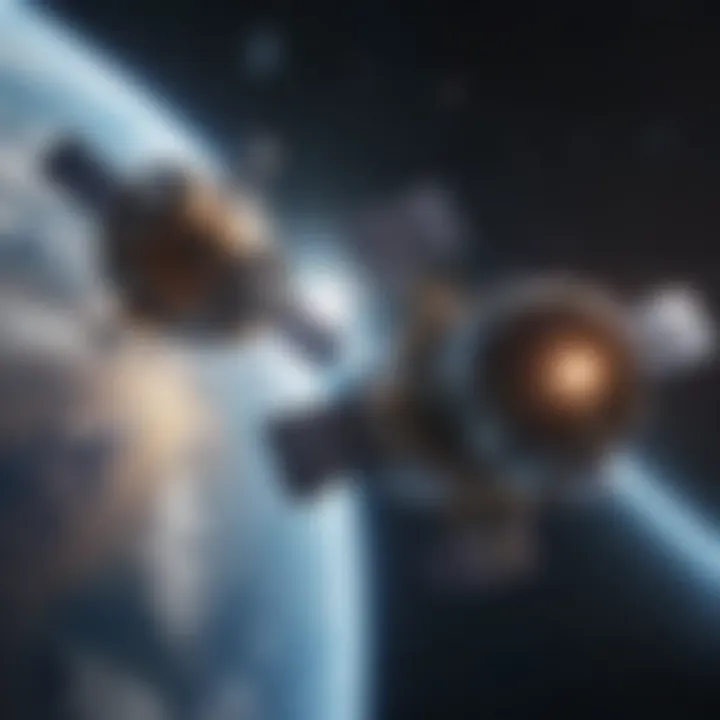
The structural integrity is essential. Engineers employ materials that minimize weight while maximizing strength. Tethers or thrusters control satellite positioning and orientation in space. Ultimately, the design phase is crucial for a satellite's success, aligning with mission goals and operational requirements.
Rocket Launch Systems
Getting an artificial satellite into orbit requires advanced rocket technology. Launch systems are designed to provide the necessary thrust to escape Earth’s gravity. The primary components of a launch system include:
- Launch Vehicle: This is the rocket that carries the satellite into space. Different payload capacities exist based on mission demands.
- Stages: Most launch vehicles operate in stages. Once a stage completes its burn, it is jettisoned, reducing the weight of the rocket.
- Guidance Systems: These systems ensure that the satellite reaches its intended orbit accurately. They use sensors and algorithms for navigation.
The selection of a launch system depends on factors such as satellite weight, intended orbit, and budget. Innovations in reusable rocket technology, like SpaceX's Falcon 9, have made space access more affordable and efficient.
"The engineering behind artificial satellites combines creativity with rigorous science, leading to innovations that propel humanity's presence in space."
The Role of Satellites in Space Exploration
Satellites play a crucial role in advancing our understanding of the universe and facilitating numerous scientific and practical endeavors. They serve both exploratory and communicative functions, providing valuable data from remote areas that are otherwise difficult to access. The information they gather about celestial bodies, including planets, moons, and asteroids, significantly influences our knowledge of space, helping to shape future endeavors.
Space missions often rely heavily on satellites. They act as pivotal components in gathering and transmitting data back to Earth. This process enables astronomers and scientists to develop comprehensive models of astrophysical phenomena and understand the dynamics of our solar system. Additionally, satellites contribute to detailed mappings of planetary surfaces, atmospheres, and potential resources, which is essential for planning future explorations.
"Satellites are our eyes and ears in the cosmos, helping to unravel the mysteries of the universe."
Satellites in Planetary Missions
Planetary missions utilize various satellites to conduct studies of different celestial objects. Advantages include the ability to monitor conditions and changes over time. For example, the Mars Reconnaissance Orbiter gathers data on the Martian surface, analyzing weather patterns, geological features, and potential sites for future human exploration. Similarly, the Voyager spacecraft has provided humanity’s first detailed images of the outer planets and continues to relay unique insights into the far reaches of our solar system.
Satellites also assist in coordinating mission logistics. They facilitate communication between spacecraft and mission control on Earth. This aspect is essential for both the success of missions and the safety of astronauts when human presence is involved.
- Examples of Notable Planetary Missions:
- Mars Reconnaissance Orbiter
- Voyager 1 and Voyager 2
- Juno around Jupiter
Through their contributions, satellites enhance our capacity to explore space. They allow scientists to conduct experiments, collect data, and experience remote environments in ways that would be impossible without technological assistance.
Communications and Earth Observation
Satellites are fundamental to communications and Earth observation systems. This aspect goes beyond planetary missions and is vital for daily activities on Earth. Satellite networks support global communications technology, including telephony, internet, and media broadcasting. They enhance connectivity and ensure that information can be transferred quickly and securely across vast distances.
Furthermore, Earth observation satellites monitor environmental conditions, such as climate change, deforestation, and natural disasters. Data collected from these observations informs governmental policies, disaster response strategies, and environmental monitoring. Understanding these trends is valuable for making informed decisions about resource management and future exploration.
- Key Contributions of Communications Satellites:
- Enabling global connectivity
- Providing weather forecasts
- Supporting telecommunications during emergencies
Future Directions in Satellite Research
Research on satellites is entering an exciting phase. The advancements in technology and the persistent curiosity of scientists are paving the way for more discoveries. In this section, we will explore the upcoming missions aimed at investigating satellites, as well as the technological innovations driving these efforts. Understanding these aspects is crucial as they influence the direction of future studies and our overall comprehension of celestial mechanics.
Upcoming Missions
Future missions will focus on both natural and artificial satellites. Some crucial planned launches include:
- NASA's Europa Clipper: Expected to launch in the 2020s, this mission will study Europa, one of Jupiter's largest moons. Scientists aim to discover signs of life in its subsurface ocean.
- JAXA's Martian Moons eXploration (MMX): Planned for launch in 2024, this mission intends to visit Phobos and Deimos, Mars' moons. It aims to collect samples from Phobos and return them to Earth.
- Artemis Program: This includes plans for lunar exploration missions that will revisit our moon, impacting our understanding of its role as a natural satellite and its resources.
These upcoming missions not only have scientific implications but also technological ones. They require advancements in various fields, from propulsion systems to data collection instruments, to gather and analyze information effectively.
Technological Innovations
The future of satellite research hinges on emerging technologies. Innovations in several areas are reshaping our exploration strategies:
- Miniaturization of Satellites: Smaller and lighter satellites can accomplish tasks that were once limited to larger spacecraft. This trend reduces costs and increases the number of missions we can undertake.
- Artificial Intelligence (AI): AI-driven analysis of satellite data will enhance our ability to understand findings more profoundly. From real-time data processing to predictive modeling, AI promises a wealth of advancements.
- Advanced Propulsion Systems: Technologies such as ion propulsion and solar sails may facilitate long-duration missions and interstellar travel, altering our approach to exploring distant satellites.
"The innovation in satellite technology will allow us to explore celestial bodies never dreamt before."
These technological shifts demand not only financial investment but also collaboration across disciplines. The challenge is to adapt to and integrate these tools into our existing framework for exploration. As we embark on these future endeavors, the synergy of human creativity and technological advancement will be decisive in uncovering the secrets that satellites hold in our solar system.
Closure
In summary, the exploration of satellites within our solar system serves as a crucial element in understanding broader astronomical phenomena. This article encapsulates the diverse types of satellites, their formation theories, and their roles in scientific research and space exploration. By analysing both natural and artificial satellites, we can appreciate how these celestial bodies contribute to our knowledge of planetary systems and our own planet Earth.
Several key points arise from the discussion in this article:
- Variety of Satellites: Understanding the distinction between natural moons and artificial satellites reveals complexity in their functions and characteristics.
- Theories of Formation: Multiple theories exist regarding how satellites form, each presenting insights into not only their origin but also implications for planetary evolution.
- Scientific Significance: Satellites play a critical role in astrobiology and planetary formation studies, offering clues about habitability and the conditions necessary for life.
The future of satellite studies is promising. As technology and methods advance, the potential for discovering new satellites or gathering detailed data from existing ones increases. Observations may reveal unknown dynamics within our own solar system and possibly beyond, enriching our overarching understanding of the cosmos.
This conclusion underscores the importance of continued investment and interest in studying satellites, as they remain invaluable assets in humanity’s quest for knowledge about space. Understanding their complexities not only deepens our comprehension of our immediate cosmic surroundings but may also inform future explorations and discoveries.







